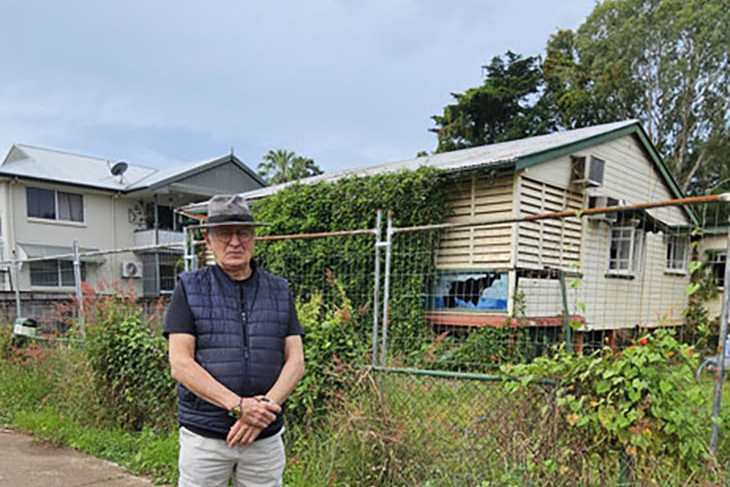General News
20 June, 2025
Eyesore going
A ‘PLACE of significance’ building that has become a dilapidated eyesore is to be demolished at Freshwater.

Developer and builder Myles Moody said the Moule cottage was beyond restoration and had been a ruination for 10 years.
He said a proposal for residential units and possibly shops at the front would improve the scenic amenity as well as provide much needed housing.
But long-term Freshwater resident and conservationist Paul Matthews said the building at 233 Kamerunga Rd was one of the earliest extant examples of a post WWI worker’s cottage.
George Moule constructed the cottage for his large family in 1919, living there with his wife, Ethel, and eight kids and his sister-in-law, Minnie LeGrande, who was the local railway and post mistress from 1915-1955.
“Losing the old cottage will be a sad day for many in the community, but as it has been left to deteriorate with broken windows, rusted guttering and an overgrown yard, the love for it has faded,” Mr Matthews said
“When I was involved with the Stratford and Freshwater Community Association (SAFCA), we fought hard to have the cottage preserved and rehabilitated,” he said. “It formed a part of the Freshwater Heritage Trail, which was established in 2009, in an effort to stop inappropriate unit development in the older parts of Freshwater and to raise awareness of the history of the suburb.
“The unit developments have slowed down, but subdividing larger lots to put multiple dwellings, is happening more. The Moule cottage is one of those,” he said.
Mr Matthews said, while Mr Moody had earlier considered moving the cottage to another site in Freshwater, it fell through as some nearby residents demanded the cottage stay.
“Another idea was to turn it into an art gallery and community hub, which gained much interest, but that fell through,” he said.
“It was even proposed to become the new Freshwater Post Office, at one stage, but Australia Post lost interest.
“Unfortunately the council has been of little help, allowing the property to deteriorate so much. It is an eyesore, but the council say their ‘hands are tied’. A very unsatisfactory outcome.”
Mr Moody said the building could not be saved.
An Australian Heritage Specialists report said the Moule cottage “is of low local heritage value”.
“It has been found that there’s no prudent or feasible way to upgrade and repair the existing dwelling to a habitable standard and therefore it’s proposed that the site be demolished,” the report said.
Mr Moody said removalists refused to take it away for fear of it disintegrating as it was driven down the road.
“It’s been a wreck for 10 years, it’s full of termites. There is asbestos that has to be removed,” he said.
Mr Moody said the building was used by junkies who left used needles behind right next to a daycare centre with up to 60 children who were at risk.
“What I am proposing is of benefit to the community. There’s obviously a housing shortage,” said Mr Moody.
“It will be a cleanly presented building that replaces a dilapidated building,” he said.
A council spokesman said the council understood and appreciated the community’s concerns around the loss of heritage and character buildings – “we take these issues seriously”.
“It is important to note that (the) council does not own or maintain the property – the responsibility for upkeep lies with the property owner.
“Every development application is assessed on its own merits, and in the case of Moule cottage, (the) council gave careful consideration to the site’s local historical significance before supporting demolition.”
The spokesman said a heritage impact statement recognised that Moule Cottage did hold some historical value, it also found that many of its original features had been altered, damaged or lost over time.
“(The) council explored a number of options – including retaining, reusing or relocating the cottage – but these were ultimately found to be unsafe, unfeasible or risked causing further damage,” he said.
“(The) council’s approval included strict conditions to acknowledge and preserve the history of the site, even though demolition was approved.”
That includes the new building must incorporate architectural references to the original cottage, such as the gables.


